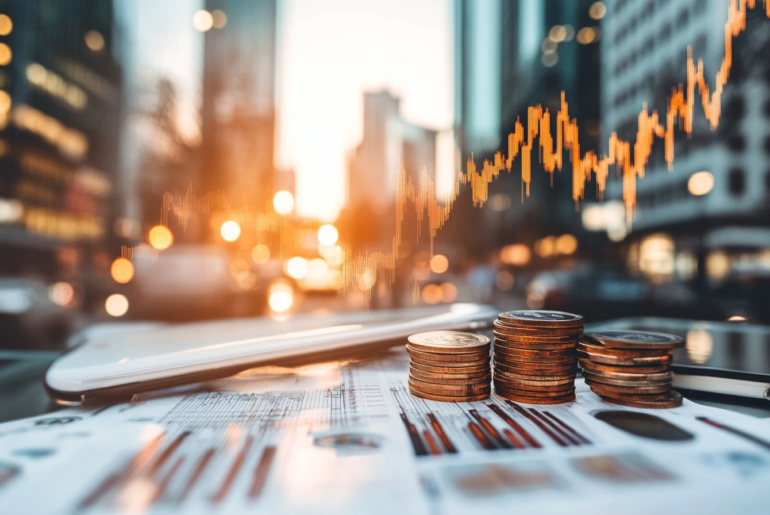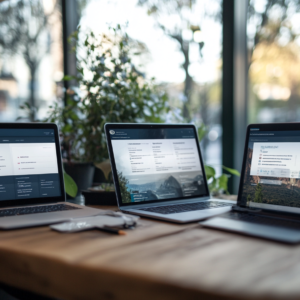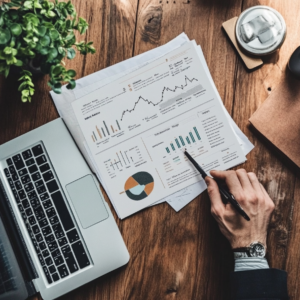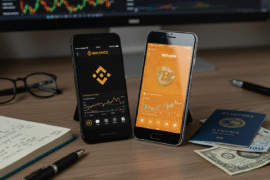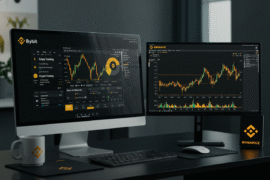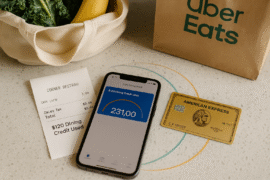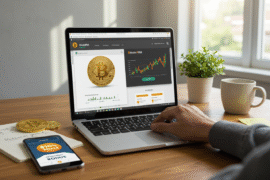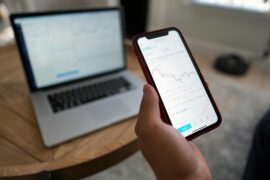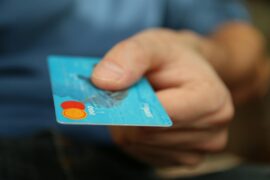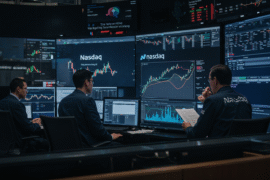This article may contain references to products or services from one or more of our advertisers or partners. We may receive compensation when you click on links to those products or services. Nonetheless, our opinions are our own.
Key Highlights
- Unveiling Forex: Explore the exciting world of forex trading. It’s a global space where people swap currencies.
- Beginner-Friendly Guide: Learn the basics of forex. You will find out about currency pairs, how the market works, and easy trading strategies.
- Step into Trading: Follow our complete guide to begin your journey. This will include choosing a broker, opening a trading account, and making your first trade.
- Strategies for Success: Discover effective trading strategies designed for beginners. These will help you feel sure as you check out the forex market.
- Risk Management Essentials: Understand why risk management is important. We will show you ways to protect your money while trading forex.
Introduction
The foreign exchange market is often called forex or FX. It can feel complex for new traders. This guide simplifies forex trading to give new traders a strong start in their trading journey. We will explain the foreign exchange market in easy terms. You will find useful information and learn helpful strategies so you can trade with confidence.
Understanding the Forex Market
The foreign exchange market is a global marketplace that never closes. It operates 24 hours a day, five days a week. Each day, trillions of dollars are exchanged. People, businesses, and central banks buy and sell currencies in this market. Unlike stock markets with physical buildings, forex trading is done online. This market connects people worldwide through computer systems.
In the forex market, people trade currency pairs. You may see pairs like EUR/USD (Euro/US Dollar) or USD/JPY (US Dollar/Japanese Yen). Each pair tells you how much one currency is worth compared to the other. When global events occur, currency values fluctuate, creating opportunities for traders to buy and sell at favorable prices.
The Structure of the Forex Market
One great aspect of the foreign exchange market is its high liquidity. With a daily trading volume in the trillions, traders can enter and exit trades quickly. The forex market takes place in major financial hubs like New York, London, Tokyo, and Hong Kong. These different time zones allow traders to respond quickly to market events and news.
The forex market attracts both individual traders and large institutions due to its accessibility and liquidity. Whether you are an expert or just starting, the forex market provides an active and potentially rewarding environment.
Major Players and Their Impact
Central banks play a crucial role in the forex market. They influence currency values by adjusting interest rates and managing foreign exchange reserves. Their actions can cause significant price changes, affecting trading strategies.
Financial institutions, such as commercial banks, hedge funds, and investment firms, engage in forex trading for profit, risk management, and client services. Their high trading volumes help maintain market liquidity.
Individual forex traders, whether part-time or full-time, seek to profit from price movements. While their trades may not significantly impact the market individually, their collective activity shapes overall trading trends.
Preparing for Your First Trade
Before you start trading, you need the right tools and resources. Understanding how the market works is essential. A skilled trader requires reliable information, trading platforms, and a clear trading plan.
Learn about technical analysis, which involves examining charts, patterns, and indicators to predict future price movements. Additionally, fundamental analysis helps traders understand economic indicators, central bank policies, and geopolitical events that impact currency values.
Essential Tools and Resources for Forex Trading
Technical analysis provides insights into past price data, helping traders identify trends and trading opportunities. Analysts use charts, indicators, and oscillators to predict future price movements based on historical data.
Fundamental analysis examines economic, political, and social factors affecting currency values. By reviewing economic indicators, central bank announcements, and global events, fundamental analysts assess market drivers.
A well-defined trading plan serves as a guide for traders. It should outline financial goals, risk tolerance, and preferred trading styles. A trading plan promotes discipline, effective risk management, and informed decision-making in volatile markets.
Setting Up Your Trading Environment
Selecting a reputable forex broker is essential. Choose brokers regulated by trusted financial authorities to ensure fund security and fair trading conditions. Consider trading costs, platform usability, and customer support quality before making a decision.
Many brokers offer demo accounts that allow traders to practice with virtual funds. Utilize demo accounts to learn platform features and test trading strategies before transitioning to real money trading.
Your trading workspace should be free of distractions, with a stable internet connection and a setup that promotes focus and informed decision-making.
Step-by-Step Guide to Starting in Forex
Step 1: Choosing a Forex Broker
Selecting a reliable forex broker is the first step in trading. A broker connects traders to financial markets. Look for brokers regulated by respected financial authorities to ensure fund safety and compliance with industry standards.
Evaluate trading fees, spreads, and commissions, as these impact long-term profitability. Assess the broker’s platform for ease of use, charting tools, and real-time data. Quality customer support is also important for resolving trading issues.
Step 2: Opening and Setting Up Your Trading Account
Once you choose a broker, the next step is opening a trading account. Brokers offer various account types suited to different experience levels and capital sizes. Beginners should start with a demo account to practice trading without financial risk.
Familiarize yourself with the platform’s features, including order placement, charting tools, and risk management functions. Understanding economic indicators such as interest rates, inflation, and GDP growth helps traders make informed decisions.
Step 3: Understanding Currency Pairs
Forex trading revolves around currency pairs, which represent the exchange rate between two currencies. For example, EUR/USD indicates how much one Euro is worth in US Dollars.
When trading forex, traders speculate on currency price movements. Buying a currency pair means anticipating a price increase, while selling indicates an expectation of a decrease.
Step 4: Making Your First Trade
With a trading account set up, traders can execute their first trade. Choose a currency pair based on research and analysis. Use technical and fundamental analysis to make informed trading decisions.
Determine trade size based on risk tolerance and account balance. Use stop-loss and take-profit orders to manage risk and secure profits.
Developing Effective Forex Trading Strategies
Successful forex trading requires strategic planning, market analysis, and disciplined risk management. New traders can improve their results by applying proven strategies.
Analyzing Currency Strength for Better Trades
Assessing currency strength helps traders identify profitable opportunities. Currency strength meters and correlation matrices provide insights into relative currency performance, helping traders make informed buy and sell decisions.
Risk Management Techniques
Risk management is essential in forex trading. Traders should establish risk tolerance levels and avoid overexposure. Using stop-loss orders limits potential losses by automatically closing trades at predetermined price levels.
Forex trading offers profit potential but carries risks. Understanding leverage and market volatility helps traders manage risks effectively.
Leverage and Its Effects on Your Trades
Leverage allows traders to control larger positions with smaller capital. While it magnifies profits, it also increases potential losses. Beginners should use leverage cautiously and adjust exposure based on risk tolerance.
How to Handle Market Volatility
Market volatility arises from economic events, geopolitical developments, and central bank policies. Effective risk management strategies, such as adjusting position sizes and using stop-loss orders, help traders navigate volatile conditions.
Monitoring economic calendars helps traders anticipate market-moving events and adapt strategies accordingly.
Conclusion
To succeed in forex trading, traders must understand market structure, key participants, and risk management principles. Choosing the right broker, analyzing currency strength, and implementing strategic risk management enhance trading success. Continuous learning and adaptation to market trends are crucial for long-term profitability in forex trading.
Frequently Asked Questions
What Is the Minimum Investment Needed to Start Forex Trading?
The minimum investment varies by broker. Some brokers allow traders to start with as little as $100, while others require larger deposits. Beginners should start with small amounts and gradually increase their investments.
Can Forex Trading be a Full-Time Job?
Yes, forex trading can become a full-time profession with dedication, a solid trading plan, and effective risk management. Achieving consistent profitability requires continuous learning and market adaptation.
How Do I Analyze Market Trends?
Market trends can be analyzed using technical analysis (price charts and indicators) and fundamental analysis (economic data and news events). Combining both methods enhances decision-making and trade accuracy.

Reviewed and edited by Albert Fang.
See a typo or want to suggest an edit/revision to the content? Use the contact us form to provide feedback.
At FangWallet, we value editorial integrity and open collaboration in curating quality content for readers to enjoy. Much appreciated for the assist.
Did you like our article and find it insightful? We encourage sharing the article link with family and friends to benefit as well - better yet, sharing on social media. Thank you for the support! 🍉
Article Title: Forex Tutorial: Essential Strategies for New Traders
https://fangwallet.com/2025/03/12/forex-tutorial/The FangWallet Promise
FangWallet is an editorially independent resource - founded on breaking down challenging financial concepts for anyone to understand since 2014. While we adhere to editorial integrity, note that this post may contain references to products from our partners.
The FangWallet promise is always to have your best interest in mind and be transparent and honest about the financial picture.
Become an Insider

Subscribe to get a free daily budget planner printable to help get your money on track!
Make passive money the right way. No spam.
Editorial Disclaimer: The editorial content on this page is not provided by any of the companies mentioned. The opinions expressed here are the author's alone.
The content of this website is for informational purposes only and does not represent investment advice, or an offer or solicitation to buy or sell any security, investment, or product. Investors are encouraged to do their own due diligence, and, if necessary, consult professional advising before making any investment decisions. Investing involves a high degree of risk, and financial losses may occur including the potential loss of principal.
Source Citation References:
+ Inspo
There are no additional citations or references to note for this article at this time.
